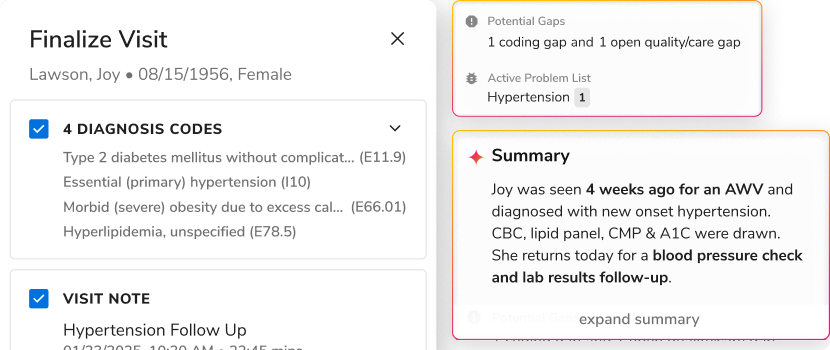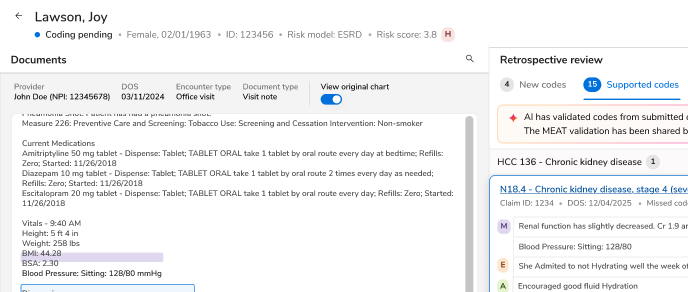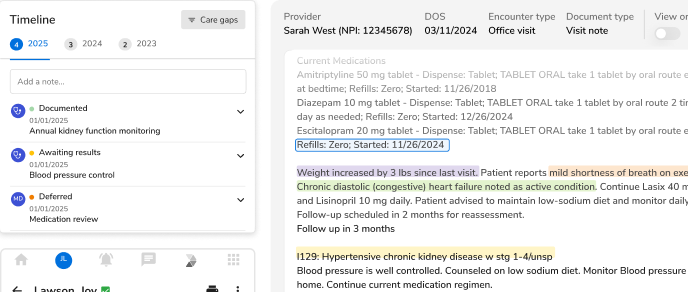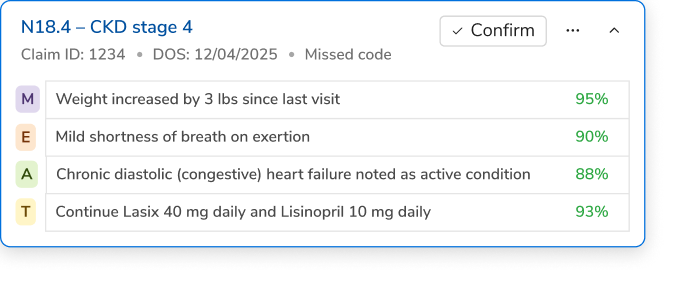Discover how Population Health Management Software is Transforming Care Coordination!


Understanding The Importance of Coordinating Care to Improve Population Health Management
Population health management refers to improving the clinical health outcomes for a specific group of people by coordinating care and involving them in their enhanced care coordination and patient engagement, supported by appropriate financial and care models.
It’s a process that helps to understand health trends, and patient's risk profiles and plan the intervention strategies for the populations you serve. It involves assessing the overall state of health (and socio-economic factors that may drive this) while simultaneously supporting and redesigning care for “at-risk” groups.
“Population health is defined as the health outcomes of a group of individuals, including the distribution of such outcomes within the group.” Kindig explains that populations “are often geographic populations such as nations or communities, but can also be other groups such as employees, ethnic groups, disabled persons, prisoners, or any other defined group.”
- IHI references a definition from population health researcher David Kindig
How Population Health Management Solutions Facilitates Care Coordination
Population health management software integrates data from multiple sources to create a comprehensive view of patient health and ultimately helps to enhance care coordination
With the implementation of the right PHM solutions, providers can track the progress of patient health improvement using integrated data systems that combine clinical and patient-reported information.
Talking to the doctor in person or online helps patients stay involved and allows the doctor to change the care plan if needed. This helps the doctor give the right care, so patients take their medicine, stay healthy for a long time, and feel happy.
Key Components and the features of PHM software that can help in Improving outcomes with advanced analytics and workflows
- Unified Data View - The establishment of a universally available unified patient record, by definition represents the end state of data readiness.
The data platform seamlessly draws data from across data silos where information is recorded and managed and presents it in a streamlined and unified way to drive the insights and efficiencies that improve health and financial performance, while helping providers transform the care delivery experience.
- Customizable Dashboards - The customizable dashboards integrate advanced analytics to help care teams visualize data in real time and provide actionable insights.
It plays a key role in enhancing care outcomes and consolidating patient data across multiple sources providing a comprehensive view of the patient. This helps care teams look into the key performance metrics, identify care gaps, and take actionable insights.
- Care Coordination - With the help of seamless communications care teams and stakeholders ensure timely interventions for the patients at risk. This process helps in optimizing workflows, closing gaps, reducing costs, and promoting patient-centered care.
- Risk Adjustment - This helps in analyzing unstructured medical notes to suggest coding opportunities for mapping potential risk factors ensuring that patients at high risk are identified and managed effectively. This helps in enhancing care and improving patient interactions and outcomes.
- Contract Management/Financial Analytics - Data-driven insights thus allow healthcare organizations to better negotiate contracts, align incentives with care quality, and reduce unnecessary costs while maintaining high care standards.

The Role of AI and Predictive Analytics in Improving Care Coordination
By enhancing clinical decisions, automating administrative tasks, and improving patient outcomes, AI is on the journey of transforming healthcare. AI helps enhance predictive analytics and operational efficiency which results in delivering timely, accurate, and effective care.
One of the extensions of AI in healthcare is the AI medical scribe, which plays a pivotal role in care coordination and workflow improvement.
It helps in automating documentation by generating real-time notes, allowing healthcare providers to focus more on patient interactions and less on administrative burdens.
These clinical notes help in reducing clinician burnout and improving overall productivity and allow the care team to communicate effectively, ensuring that everyone involved in the care journey of the patients has up-to-date information.
This improves transitions of care, reduces redundant tests, and fosters better collaboration among specialists, nurses, and other healthcare providers.

Key aspects of AI scribe solutions that can enhance care coordination include:
Patient engagement: The system sends patients reminders about their medications, upcoming appointments, and follow-up visits. This helps make sure that no care opportunities are missed.
Clinical Alerts: This feature sends immediate alerts to doctors, letting them know about any changes in the patient's condition. These alerts help coordinate care and allow for timely interventions.

Enhancing patient engagement for better coordination:
Remember: Effective communication, collaborative decision-making, and providing accurate information to patients can encourage greater engagement. Using patient websites and health apps empowers patients to take an active role in their healthcare, enabling effective management of chronic conditions and personalized care delivery.
Practical Steps for Implementing Population Health Management (PHM) Software to Improve Care Coordination:
To successfully implement PHM, organizations should start by identifying main goals and prioritizing patient groups. Here are the steps to follow when implementing PHM software in your practices to improve care coordination.
When selecting PHM software, make sure the solutions used can seamlessly integrate data from clinical, claims, and social determinants of health sources.
Train Care Teams Effectively: Focus on data interpretation, risk stratification methodologies, and intervention protocols to provide hands-on practice with the platform's features, including patient outreach tools and performance dashboards.
Continuous Monitoring and Optimization: Regularly reviewing data on patient outcomes, care gaps, and intervention success rates helps to identify trends and areas for improvement. Gathering feedback from care teams on software usability can also help in improving workflow efficiency.
Conclusion
To summarize, PHM software is helping to transform the care journey by integrating data from diverse sources and by using different theoretical concepts. A future breakdown of how PHM software is helping to transform care coordination by integrating data from diverse sources can add to our understanding of what is needed, on which level, and with what kind of mechanism can be added to achieve a certain outcome in the implementation of PHM. We can also see how, with the use of the right set of software or PHM solutions and different analytics platforms, organizations can easily identify patients at high risk and how AI is helping enhance patient engagement and care coordination.
Looking forward to transforming your care journey?
Schedule a call to learn more about how Innovaccer’s population health management solution can help your organization improve patient outcomes and how population health management software can transform healthcare delivery.

.png)





.png)









.svg)
.svg)

.svg)

